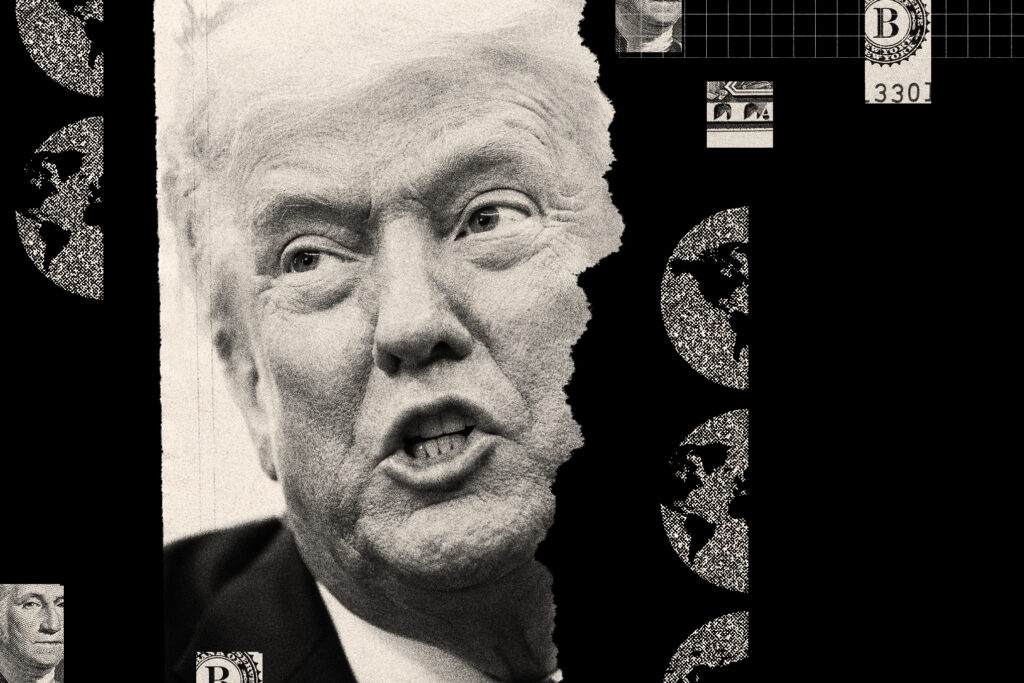President Donald Trump’s tariffs have been fast, furious and hard to track.
There are the drug-trafficking tariffs. Tariffs to fix trade balances, some pulled back. China tariffs — raised, raised again, lowered some, lowered again. Tariffs on imported cars, but not on all car parts, and less on Bentleys. Tariffs on Brazil over the prosecution of former president Jair Bolsonaro for his role in an attempted coup.
The latest twist came Friday, when Trump issued an executive order halting tariffs on many food and agricultural products, including beef, coffee and many spices.
The levies that importers pay to bring in specific products from foreign countries have evolved so many times that American shoppers could be forgiven for not knowing what is on, what is off, and what is on the table.
Add in a pair of Supreme Court cases, tumultuous trade negotiations with longtime allies and national security concerns and it’s enough to make anyone need a field guide.
This is what to know about tariffs currently in place, those threatened by court cases and how consumers are being hit.
What tariffs are currently in effect?
The most noticeable tariffs that Americans are encountering are those on goods from pretty much every country around the world, ranging from 50 percent on Brazilian exports to 10 percent on British ones. The taxes are typically paid by American companies that import the goods as they cross the border.
But it’s not just finished goods — Trump has also added tariffs on many components that comprise the building blocks of manufacturing, including a 50 percent tax on steel, aluminum and copper. And tariffs have hit autos to the tune of 25 percent — with many exceptions, 10 percent on lumber and 25 percent on upholstered furniture and vanities.
Trump’s threatened and imposed tariffs may not be uniform for all importers. The president has shown a willingness to bend or exempt the rules for companies that agree to boost, or work on potentially boosting, American manufacturing. Trump has insisted that tariffs will lead to a rebirth of manufacturing, an industry that has increasingly dwindled within U.S. borders. When Trump threatened a 100 percent tariff on computer chips, a vital component of all consumer electronics, he said it wouldn’t apply to companies that commit to “building” on U.S. soil.
Which tariffs are challenged in the Supreme Court cases?
Trump’s most prominent and controversial tariffs are facing an existential threat in front of the U.S. Supreme Court. The court heard oral arguments in early November on the cases, which are brought by small businesses with powerful backers. They argue that Trump did not have the authority to impose his “Liberation Day” tariffs under the emergency law that he cited.
“I would say the best way of understanding what Congress does in emergencies is to look at their [past] emergency statutes. Not one has ever given the president a taxation power or a tariff power,” Neal Katyal, a lawyer for the small-business challengers, said during oral arguments.
The cases target the tariffs imposed under the International Emergency Economic Powers Act (IEEPA), including the widespread country-specific tariffs that Trump has levied on goods from nearly every country. The law does not specifically mention tariffs and has not been used by past presidents to impose the duties.
The Justice Department argued that the tariffs are necessary in response to a national emergency that Trump declared over the foreign trade deficit, and are within the president’s power to impose. The day after the court’s hearings, Trump addressed tariffs in the Oval Office in response to questions from reporters.
“I think it’s one of the most important cases in the history of our country,” he said. “So much revolves around tariffs as a defensive mechanism for our country, as national security for our country.”
Which tariffs are not at risk from the court cases?
The cases before the Supreme Court only target tariffs imposed under IEEPA. There are more-traditional ways for presidents to impose the levies, and Trump has also made use of those laws to bolster sector-specific tariffs, including those on aluminum, steel and copper.
Those product-specific tariffs are not at risk of being thrown out. And the legal avenues under which they were imposed open other options for Trump to reimpose at least some of his widespread tariffs using different methods if they are halted by a Supreme Court decision.
How have prices been affected?
Prices for many products have gone up as tariffs hit supply lines. Toys, cars, coffee and bananas have gotten more expensive, and several small and major businesses, including Walmart and Home Depot, say they have to raise prices in response to the levies.
Tariffs have increased retail prices nearly 5 percentage points, according to a Tax Foundation analysis of data from Harvard Business School’s Pricing Lab. While economists say that the cost of tariffs overall is shared between the exporting business, importer and consumers, it’s accepted that the importer and consumers shoulder a big part of the increased fees.
“In the long run, businesses can’t really absorb those costs in perpetuity,” said Alex Durante, senior economist at the right-leaning Tax Foundation, which opposes the tariffs. “It’s ultimately going to be the consumers that are going to be bearing these costs.”
Grocery costs could see some alleviation after Trump’s Friday announcement, which exempted a large variety of agricultural products from tariffs, including tomatoes, fruit juices and bananas.
The Budget Lab at Yale estimated in late October that tariffs imposed this year could mean an average household income loss of $1,800 for Americans. And people are already feeling the broader crush of rising prices — Americans say they are spending more on groceries and utilities than they were a year ago, according to a recent Washington Post-ABC News-Ipsos poll.
What’s going on with trade talks?
The White House has inked preliminary trade understandings with dozens of countries around the world, in a move to get more favorable terms in exchange for lowering threatened tariffs on those countries’ exports. The European Union agreed to a deal to lower its tariff rate to 15 percent, and the United Kingdom’s rate is now set at 10 percent after talks.
But negotiations are more uncertain and tenuous with two of America’s largest trading partners — China and Canada. The U.S. and China agreed, again, to a bargain last month to alleviate U.S. worries about obtaining essential rare earth minerals that are used in manufacturing electronics. The deal only lasts one year, however, and uncertainties remain.
Trump stalled negotiations with Canada, a crucial American trading partner, in October after the government of Ontario ran a television ad featuring President Ronald Reagan criticizing tariffs. Trump threatened to add an additional 10 percent levy on Canadian imports. Prime Minister Mark Carney said he apologized to Trump, but talks have not resumed.
What other tariffs are coming?
The Trump administration is pursuing several investigations into specific industries that could result in tariffs, including commercial aircraft, wind turbines, some medical equipment and robotics.
Those tariffs would be imposed using a long-standing law, which is not being threatened in the Supreme Court cases.
Will consumers get tariff rebates?
It’s unlikely that individual consumers will see any money flowing back to them even if the bulk of Trump’s tariffs are halted by the Supreme Court. Trump has floated the idea of individual rebates for Americans, but that plan faces many roadblocks and would be costly.
Will businesses get tariff refunds?
Whether businesses will see refunds if the Supreme Court halts tariffs is more tricky. There’s a process in place for businesses to get duties refunded if they contest the amount they paid at the border. Businesses have about 10 months to adjust their import info, and another six months to protest their fees, said Timothy Meyer, a professor in international business law at Duke Law.
Depending on the court ruling, the government could end up getting hundreds or thousands of refund claims unless it offers them automatically. Congress could also introduce legislation to manage the process, Meyer said.
“That would be the cleanest way to address what is likely to be multibillion dollars in claims from hundreds, if not thousands, of importers,” he said.
During oral arguments in front of the court, Katyal, the lawyer representing five small businesses who challenged the tariffs, said the government had agreed to repay at least those companies. For the rest? Well, it may be partly up to the court and what exactly its decision says.
If the government issues refunds, that could mean a lengthy process before businesses see any money back.
“It seems to me like it could be a mess,” Justice Amy Coney Barrett said to Katyal during arguments.
“It’s a very complicated thing,” he responded.
The post Here’s what’s going on with Trump’s tariffs, prices and the Supreme Court
appeared first on Washington Post.




